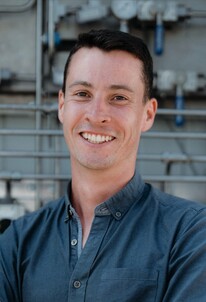Research project
Power-to-Transport
The project intends to assess electric storage with batteries, conversion to e-methane via electrolysis of water and methanation of H2 at a bus terminal to optimize the utilization of variably produced electricity from solar PV cells in a transport system with electric and gas vehicles.
We aim in reducing the amount of fossil fuels uses in the public transport sector, specifically local and regional buses.
Problem statement (from the project proposal)
The need for energy storage systems has been discussed in the context of increasing shares of variable renewable energy in the energy mix of many countries. While some regions have been facing earlier unbalances in their electric grid, other regions have been less stressed due to a slower adoption of wind and solar production. Region Uppsala is committed to reduce their greenhouse gas emissions in the transport sector, therefore it is implementing a demonstration project based on electric buses powered by solar PV cells. This innovative implementation requires measures to balance solar PV production with the demand of public buses. The most feasible alternative foreseen by the consortium is a combined solution based on battery and power-to-gas system. This concept offers several synergies with regional renewable resources, namely (a) solar PV production would be balanced according to the demand of electric buses; (b) shares of H2 could be directly mixed with CH4 to be used as fuel based on the current locally available technology; (c) excess H2 could be methanized to produce additional CH4. Here CO2 from local biogas plants would be recovered in a carbon capture and utilization (CCU) concept; (d) Solar PV power combined with off-peak grid-based electricity could be stored for later use; (e) waste heat from electrolyzers could be integrated in the local district heating system, and (f) O2 from the electrolyzer could be used in the local wastewater treatment plant, reducing power consumption during aeration of activated sludge process.
Case study in Uppala
The project intends to assess electric storage with batteries, conversion to e-methane via electrolysis of water and methanation of H2 at a bus terminal to optimize the utilization of variably produced electricity from solar PV cells in a transport system with electric and gas vehicles. Specific methods and models will be developed for techno-economic evaluations and climate impact assessment for optimization of different operational strategies. The tools are developed to be adaptable and used in other regions in different countries.
The project has the potential to increase the number of electric buses by 30%, and to allow an increase by 50% in CH4 production for transport sector, resulting in 25% less greenhouse gas emissions than the current scenario.
Impact of this problem
- De-fossilization of local and regional buses in Uppsala
- Creation of a general modelling framework that can be adapted to different case studies additionally to region Uppsala
Research questions
- Region Uppsala has planned to implement 10 electric buses driven by solar PV cells. How can those buses be optimally operated and integrated into the whole enrgy supply chain?
- Uppsala Vatten already supplies 50% of buses fuel demand in the form of CH4 from conventional anaerobic digestion plants. Can renewable gas supply for public buses be increased by 50% through synthetic gas obtained via power-to-gas technology?
- Different activities that occur within the municipality of Uppsala emit greenhouse gas, in particular public transport system (50% of buses use natural gas), district heating and wastewater treatment (power consumption from the grid). Can the reduction in fossil fuel consumption (directly or indirectly) be allowed within the municipality of Uppsala as a means of cutting its greenhouse gas emissions by 25% in public transport, district heating and wastewater treatment?
- The development of an evaluation and optimization tool for an energy storage system will be carried out in such a way that it can also be used to evaluate other regions and cities by adapting specific parameters. Can a universally applicable optimization tool be developed?
Design of a cost-optimal energy-to-methane plant
Task 1) In this task, the basis for the combination of the three interacting systems (solar PV cells, battery and power-to-gas) is created and important parameters for the analysis will be determined. The knowledge obtained will then be combined and it will be explained how in task 3 the model is built from this knowledge. The model is intended to perform the energy distribution in the system for a period of one year as a time-step simulation. The model will be designed in such a way that it can be applied regardless of location. It can therefore be used for other boundary conditions (i.e. other countries).
Task 2) To be able to analyze and compare the results and different and energy storage concepts a common set of indicators will be developed for a systematic evaluation of both the technical and economic performance. This includes efficiencies of the processes, components and systems and their operation for which certain boundaries have to be defined describing mass and energy flows to be considered.
Different load profiles will be used to find the optimal configuration for an interim H2 storage and the methanation capacity to reach production goals (e.g. consumption of the bus fleet) and lowest gas production costs. The load profiles for operating the power-to-gas plant will be from direct coupled solar PV cells, the output of local solar irradiation data from www.renewables.ninja or depending on the electricity rates from the day-ahead or intraday market (grid-based electricity). On the economic side, a common approach to assess production costs of synthetic H2 and CH4 be developed, considering OPEX and CAPEX of the methanation plants and periphery (e.g. educt and product gas treatment).
Task 3) The main aspect of task 3 is the evaluation of the design data from the different concepts with focus on the evaluation of the business case.
- First step: design specific aspects of technologies are compared (e.g. process requirements, size, up- and down-stream processing) evaluating capital expenditure of the plants.
- Second step: common process engineering parameters as gathered and defined in Task 1 are analyzed.
- Third step: the operational expenditures (OPEX) are investigated for the different operation modes to reveal advantages and disadvantages in flexibility, robustness and reliability. As an example, the permanent, sufficient availability of fuel for the bus fleet is being examined. Besides the methanation process and plant analysis, also all balance of the plant components will be investigated regarding performance and costs. All findings are compared to state-of-the-art technologies to define further optimization potential due to learning effects and potentials for the reduction of costs.

Team Power-to-Gas
Matthias Frommelt
IET Institut für EnergietechnikWissenschaftlicher Mitarbeiter
+41 58 257 49 23matthias.frommelt@ost.ch

Boris Kunz
IET Institut für EnergietechnikWissenschaftlicher Mitarbeiter
+41 58 257 43 12boris.kunz@ost.ch


